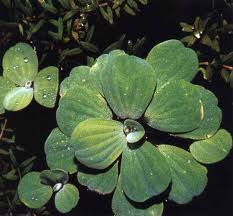Pistia
Pot Cultivation
Water Lettuce can be grown outdoors year-round in tropical, frost-free climates. In very hot regions, provide some shade. The plants are simply set on the water's surface since they are floating plants. Water Lettuce does very well in some gardens, yet in others it may turn yellow and not grow so actively. If this happens, try placing the yellowing plants in separate containers and add fertilizer. This plant is very susceptible to frost. Exposure will cause the leaves to turn white and rot. These plants may be wintered indoors, but this does not always work. Grow them in tanks, aquariums or tubs, which have a depth of 18 to 24 inches, in a minimum temperature of 60° F. Fill with about 6 inches of loam and then with water. The plants are set on the surface of the water.Propagation
The small plantlets that are formed on long runners may be detached. |
P. stratiotes |




